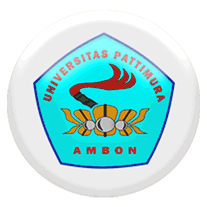APPLICATION OF DBSCAN FOR CLUSTERING SOCIETY BASED ON WASTE MANAGEMENT BEHAVIOR
Abstract
This research aims to answer the challenge of identifying the characteristics of the Batu City community in waste management, where traditional clustering techniques are often suboptimal due to the presence of noise or objects that do not fit the general pattern. As a solution, the Density-Based Spatial Clustering of Applications with Noise (DBSCAN) algorithm is applied, which allows the clustering of objects based on local density and detects the presence of noise or outliers in the data. DBSCAN is considered more flexible than other clustering methods, especially in clustering data that is not linear or has a non-uniform distribution. This study successfully identified three clusters of waste management behavior with a silhouette index of 0.875, indicating good cluster quality. The first cluster consists of communities with good environmental quality, active participation in the use of waste banks, and a deep understanding of 3R-based waste management. The second cluster has adequate infrastructure quality and high awareness of the potential economic benefits of waste, while the third cluster displays a pretty good level of understanding of the 3Rs and relatively good environmental quality. The results of this study provide important insights into the differences in waste management characteristics between clusters, with environmental quality proving to be a significant factor in cluster formation.
Downloads
References
J. F. Hair, W. C. Black, and R. E. Anderson, MULTIVARIATE DATA ANALYSIS (5th ed.). 1998.
I. D. Id, A. Astrid, and E. Mahdiyah, “MODIFIKASI DBSCAN (DENSITY-BASED SPATIAL CLUSTERING WITH NOISE) PADA OBJEK 3 DIMENSI,” Jurnal Komputer Terapan, vol. 3, no. 1, pp. 41–52, 2017, [Online]. Available: http://jurnal.pcr.ac.id
E. T. K. Dewi, A. Agoestanto, and S. Sunarmi, “METODE LEAST TRIMMED SQUARE (LTS) DAN MM-ESTIMATION UNTUK MENGESTIMASI PARAMETER REGRESI KETIKA TERDAPAT OUTLIER,” UNNES Journal of Mathematics, vol. 5, no. 1, pp. 47–54, 2016.
T. N. Tran, K. Drab, and M. Daszykowski, “REVISED DBSCAN ALGORITHM TO CLUSTER DATA WITH DENSE ADJACENT CLUSTERS,” Chemometrics and Intelligent Laboratory Systems, vol. 120, pp. 92–96, Jan. 2013, doi: 10.1016/j.chemolab.2012.11.006.
P. B. Nagpal and P. A. Mann, “COMPARATIVE STUDY OF DENSITY BASED CLUSTERING ALGORITHMS,” Int J Comput Appl, vol. 27, no. 11, pp. 44–77, Dec. 2011, doi: 10.5120/3341-4600.
S. U. Rehman, S. Asghar, S. Fong, and S. Sarasvady, “DBSCAN: PAST, PRESENT AND FUTURE,” in The Fifth International Conference on the Applications of Digital Information and Web Technologies (ICADIWT 2014), IEEE, Feb. 2014, pp. 232–238. doi: 10.1109/ICADIWT.2014.6814687.
Z. Wei, Y. Gao, X. Zhang, X. Li, and Z. Han, “ADAPTIVE MARINE TRAFFIC BEHAVIOUR PATTERN RECOGNITION BASED ON MULTIDIMENSIONAL DYNAMIC TIME WARPING AND DBSCAN ALGORITHM,” Expert Syst Appl, vol. 238, p. 122229, Mar. 2024, doi: 10.1016/j.eswa.2023.122229.
A. Fauzan, G. Fadillah, A. Fitria, H. Adriana, and M. Bariklana, “CLUSTER MAPPING OF WASTE EXPOSURE USING DBSCAN APPROACH: STUDY OF SPATIAL PATTERNS AND POTENTIAL DISTRIBUTION IN BANTUL REGENCY,” JOIV : International Journal on Informatics Visualization, vol. 8, no. 2, p. 751, May 2024, doi: 10.62527/joiv.8.2.2475.
“LAPORAN KINERJA 2023,” 2023.
A. Kassambara, PRACTICAL GUIDE TO CLUSTER ANALYSIS IN R: UNSUPERVISED MACHINE LEARNING, vol. 1. Sthda, 2017.
K. Wright, “WILL THE REAL HOPKINS STATISTIC PLEASE STAND UP?,” R Journal, vol. 14, no. 3, 2022.
R. G. Lawson and P. C. Jurs, “NEW INDEX FOR CLUSTERING TENDENCY AND ITS APPLICATION TO CHEMICAL PROBLEMS,” J Chem Inf Comput Sci, vol. 30, no. 1, pp. 36–41, Feb. 1990, doi: 10.1021/ci00065a010.
R. A. Johnson and D. W. Wichern, APPLIED MULTIVARIATE STATISTICAL ANALYSIS (6th ed.). New Jersey: Pearson education, Inc, 2007.
E. Prasetyo, DATA MINING MENGOLAH DATA MENJADI INFORMASI MENGGUNAKAN MATLAB. 2014.
A. S. Devi, I. K. G. D. Putra, and I. M. Sukarsa, “IMPLEMENTASI METODE CLUSTERING DBSCAN PADA PROSES PENGAMBILAN KEPUTUSAN,” J. Ilm. Teknol. Inf, vol. 6, no. 3, p. 185, 2015.
S. Scitovski, “A DENSITY-BASED CLUSTERING ALGORITHM FOR EARTHQUAKE ZONING,” Comput Geosci, vol. 110, pp. 90–95, Jan. 2018, doi: 10.1016/j.cageo.2017.08.014.
P. N. Tan, M. Steinbach, and V. Kumar, DATA MINING CLUSTER ANALYSIS: BASIC CONCEPTS AND ALGORITHMS. 2013.
W. Yustanti, “ALGORITMA K-NEAREST NEIGHBOUR UNTUK MEMPREDIKSI HARGA JUAL TANAH,” vol. 9, no. 1, pp. 57–68, 2012.
B. Mu, M. Dai, and S. Yuan, “DBSCAN-KNN-GA: A MULTI DENSITY-LEVEL PARAMETER-FREE CLUSTERING ALGORITHM,” IOP Conf Ser Mater Sci Eng, vol. 715, no. 1, p. 012023, Jan. 2020, doi: 10.1088/1757-899X/715/1/012023.
D. Jollyta, M. Siddik, H. Mawengkang, and S. Efendi, TEKNIK EVALUASI KLASTER SOLUSI MENGGUNAKAN PYTHON DAN RAPIDMINER. Deepublish, 2021.
J. F. J. Hair, W. C. Black, B. J. Babin, and R. E. Anderson, MULTIVARIATE DATA ANALYSIS (7th ed.). Prentice Hall, 2009.
Copyright (c) 2025 Hafizh Syihabuddin Al Jauhar, Solimun Solimun, Rahma Fitriani

This work is licensed under a Creative Commons Attribution-ShareAlike 4.0 International License.
Authors who publish with this Journal agree to the following terms:
- Author retain copyright and grant the journal right of first publication with the work simultaneously licensed under a creative commons attribution license that allow others to share the work within an acknowledgement of the work’s authorship and initial publication of this journal.
- Authors are able to enter into separate, additional contractual arrangement for the non-exclusive distribution of the journal’s published version of the work (e.g. acknowledgement of its initial publication in this journal).
- Authors are permitted and encouraged to post their work online (e.g. in institutional repositories or on their websites) prior to and during the submission process, as it can lead to productive exchanges, as well as earlier and greater citation of published works.

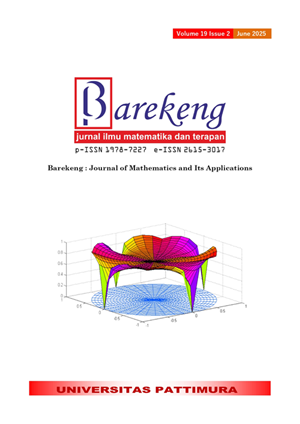
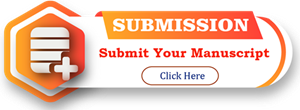

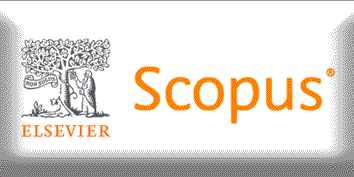
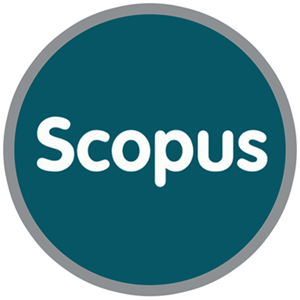
1.gif)
